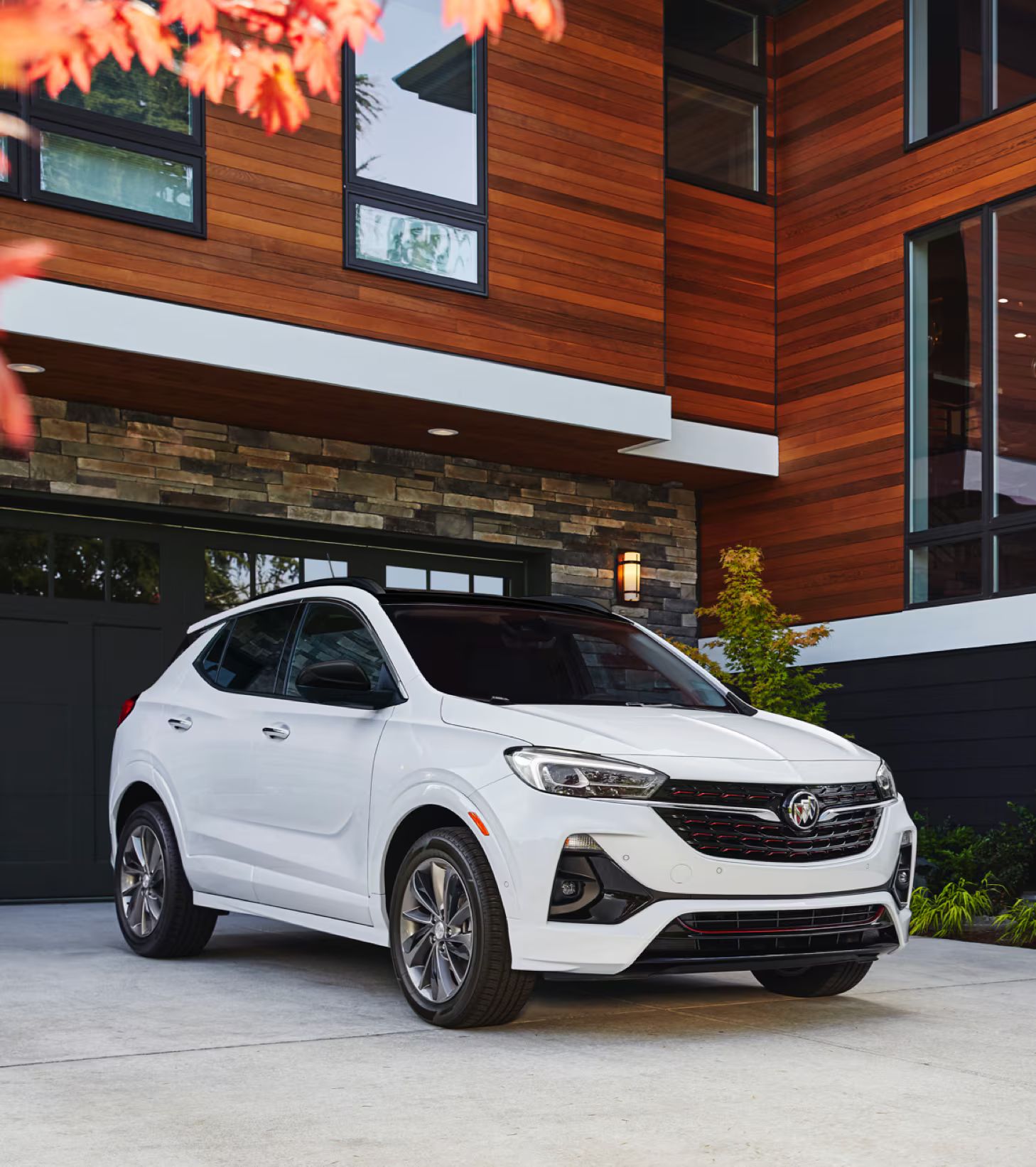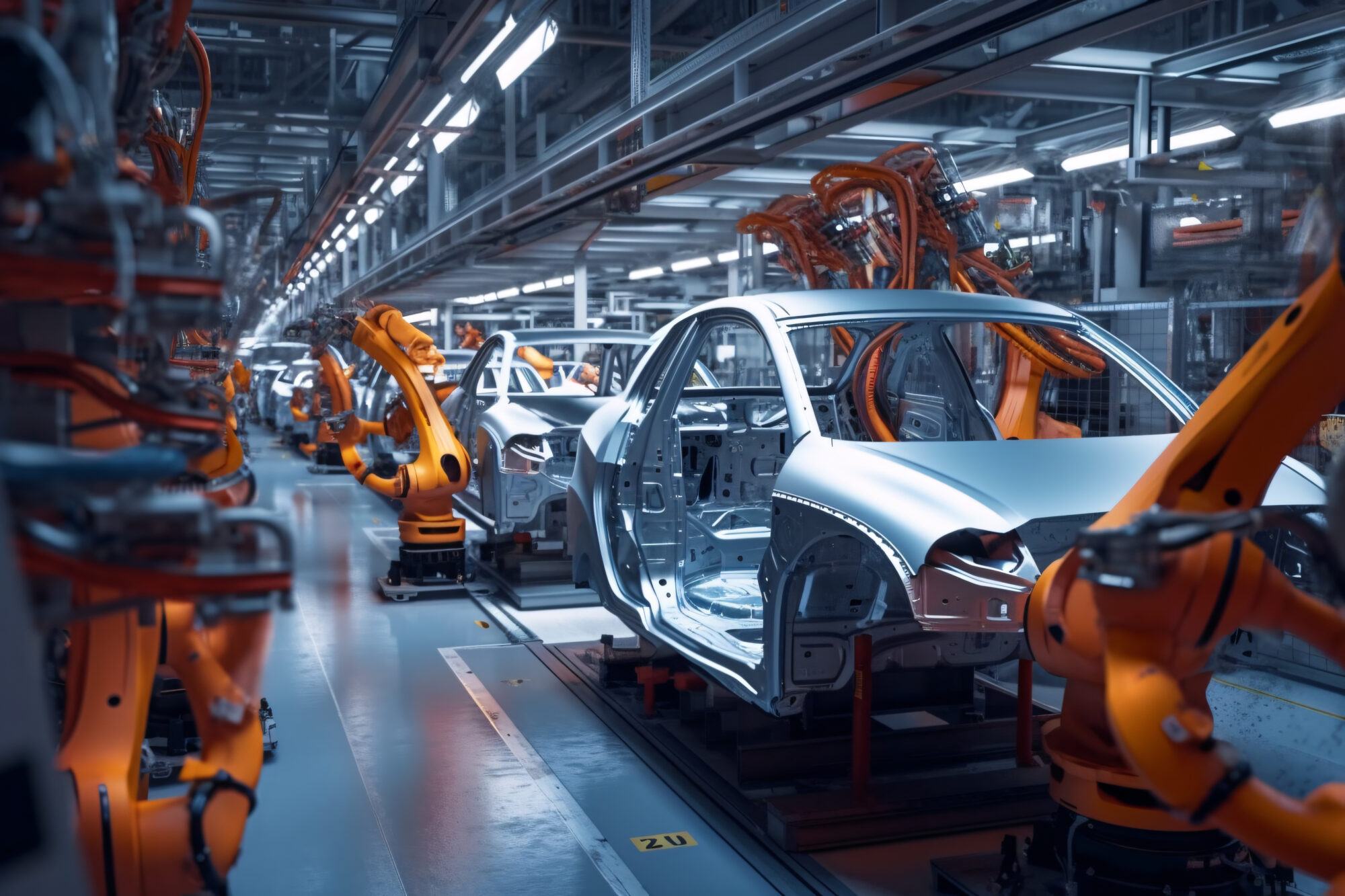
The automotive industry is in a period of rapid transformation, presenting both significant challenges and unparalleled opportunities for marketers. With digital channels now serving as the primary touchpoint for a staggering 95% of vehicle buyers, the traditional marketing playbook is rapidly becoming obsolete. Marketers today must navigate a complex landscape defined by evolving consumer behaviors, technological advancements, and a renewed emphasis on transparency and value.
This shift isn’t just about where buyers start their journey; it’s about how they interact at every stage. From the initial research phase to the final purchase, digital platforms are streamlining and integrating the entire experience, compelling automotive brands to rethink their strategies. We are seeing a convergence of factors, including flat ad budgets, a nuanced EV adoption curve, and a crucial need to rebuild public trust in automakers.
Understanding these dynamics is paramount for any automotive marketing professional looking to gain ground and protect growth in 2025. In this in-depth analysis, we will delve into the twelve key trends that are fundamentally reshaping the automotive industry’s marketing landscape. This first section will explore the initial six trends, providing actionable insights into how you can adapt and thrive amidst these profound changes, leveraging digital innovation to connect with modern consumers more effectively than ever before.
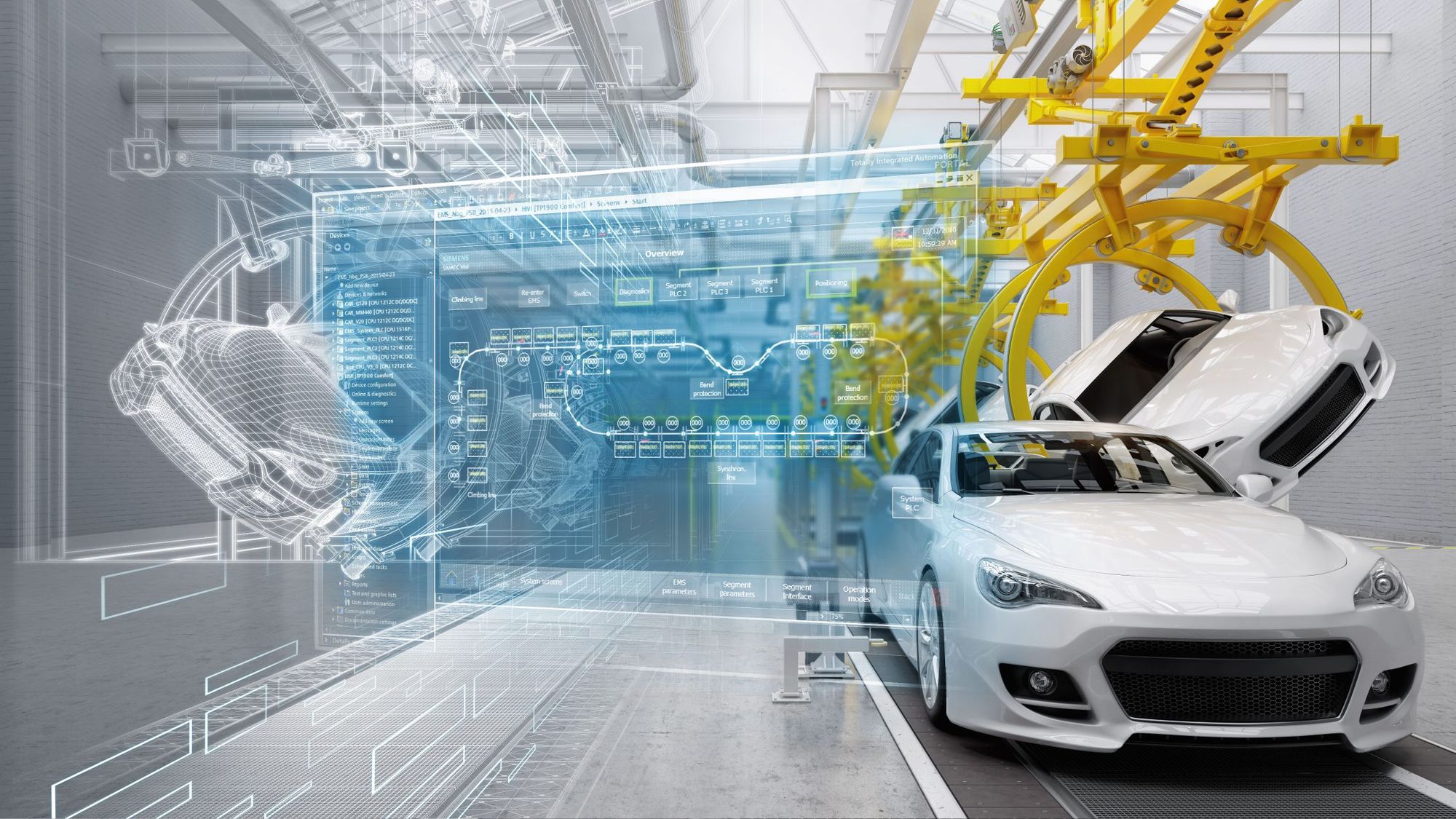
1. **Automotive Buying Shifts to Online**The landscape of automotive purchasing has dramatically moved online, with 92% of potential buyers now conducting their vehicle research digitally before making a purchase. This represents a significant shift, particularly post-COVID-19, where younger individuals and Millennials are increasingly preferring digital platforms for their car research. This online environment offers a convenient way for buyers to compare options and access comprehensive details about brands and models directly from their homes, empowering them with information.
This trend means that consumers are arriving at dealerships more prepared and knowledgeable than ever before. They come armed with extensive information on models, features, pricing, and even competitive comparisons. This heightened level of buyer preparedness is transforming the purchasing process, potentially streamlining negotiations and sales cycles for dealerships that are equipped to handle these informed interactions efficiently.
However, despite this strong lean towards digital research, it is important to note that this does not signify the end of traditional car dealerships. A substantial 79% of consumers still express a preference for in-person shopping experiences when it comes to the final stages of vehicle acquisition. Therefore, for automotive marketers, the clear takeaway is the critical need to enhance and diversify their online presence, ensuring it complements and strengthens the essential role of the physical dealership. Enhancing and diversifying an online presence is crucial for meeting consumer expectations.
This digital-first dominance is further supported by industry reports indicating that 43% of dealers now offer fully digital car purchases. This is a considerable increase from 34% in 2022 and 39% in 2023, signaling the rapid adaptation of the retail model to meet buyer demands for both speed and transparency. Marketers are now competing not just on product features, but equally on digital platforms, social commerce, and local search optimization, making digital showrooms and effective online strategies core to guiding the consumer journey.
Read more about: Why Are Used Car Prices Still Soaring? Unpacking the Economic Reasons No One Tells You
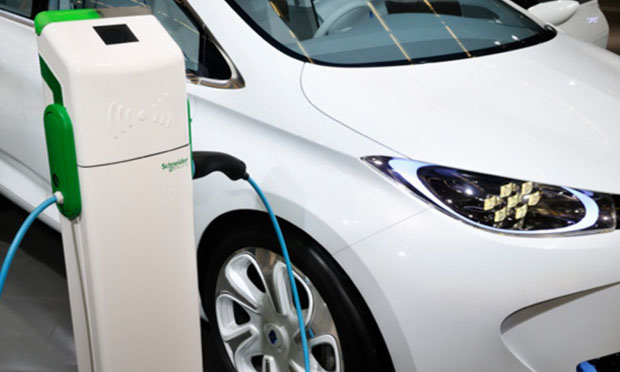
2. **Electric Vehicles (EV) Still Surge**The Electric Vehicle market continues its robust growth, with projected global revenues set to reach an impressive $623 billion in 2024. Despite significant hurdles such as the impact of COVID-19, subsequent supply chain disruptions, and increased production costs driven by rising raw material prices, the EV market maintains a steady expansion trajectory. It is anticipated to grow at a rate of 9.82% through 2028, highlighting its enduring momentum and market potential.
The growth in EV sales has been substantial, with figures more than doubling in 2021 compared to 2020. This surge allowed EVs to capture approximately 5% of the global passenger car market, surpassing the sales volume of traditional internal combustion engine vehicles in specific segments. In the U.S. specifically, sales of new electric vehicles also more than doubled in 2021, marking a remarkable 108% increase compared to the previous year, a trend that is projected to continue its upward climb well into 2028.
However, despite this rapid growth and substantial investment, the US EV market faces significant challenges, particularly concerning pricing and the development of a robust charging infrastructure. Andy Kemp, Managing Director at KORTX, emphasizes that making EVs affordable and ensuring accessible charging stations are critical for mainstream adoption. Addressing these dual challenges head-on is essential to sustain market momentum and make electric vehicles a viable option for a broader spectrum of consumers.
Automotive marketers must strategically adapt their approaches to effectively highlight the innovation, sustainability, and economic benefits that EVs offer. This means crafting compelling narratives around reduced running costs, environmental advantages, and the technological advancements inherent in electric models. By focusing on these aspects, marketers can capture increasing consumer interest and overcome existing hesitations, driving further adoption of electric vehicles in a competitive market.
Read more about: Why Are Used Car Prices Still Soaring? Unpacking the Economic Reasons No One Tells You
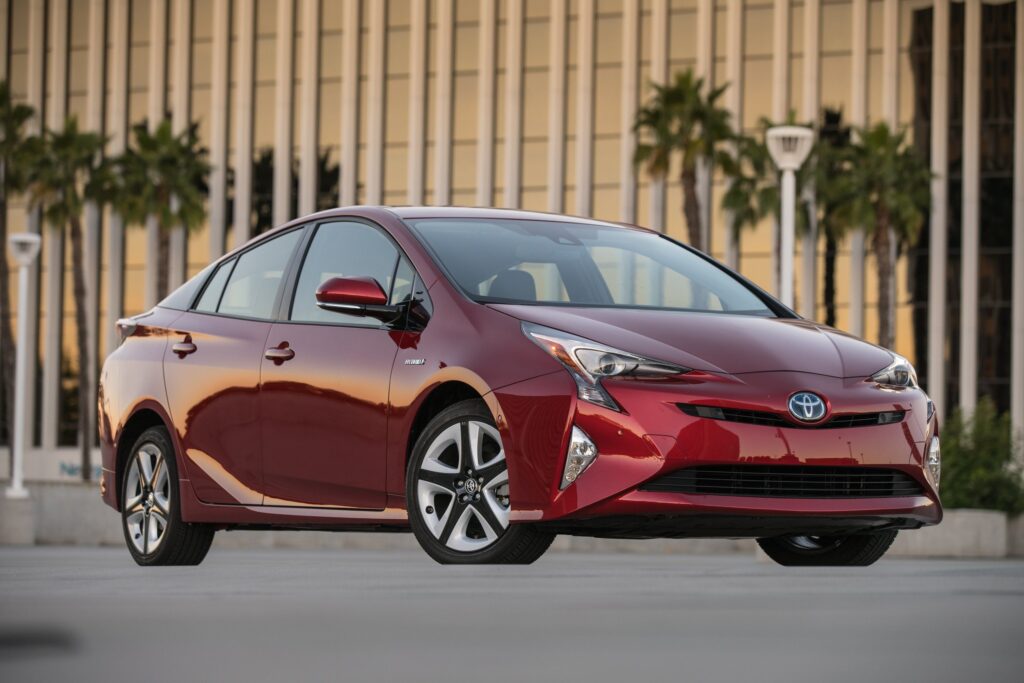
3. **An Increased Demand for Hybrid Vehicles**Amidst the surging interest in electric vehicles, there is a clear and growing demand for hybrid vehicles, reflecting a pragmatic consumer approach. This trend is partly fueled by the broader automotive industry’s challenges, as seen in GM’s Q4 operating income decrease and significant losses in their EV sector. These financial shifts underscore a broader industry need to balance ambitious EV goals with the current readiness and preferences of consumers.
Hybrid vehicles present an attractive intermediate solution for consumers who are hesitant about the higher price points and extensive charging infrastructure requirements associated with fully electric vehicles. They offer a compelling blend of an electric driving experience for shorter distances combined with the familiarity and range reassurance of a traditional combustion engine for longer journeys. This provides a tangible reduction in carbon footprint without the common range anxiety concerns.
The popularity of hybrids is evident in sales figures, with hybrid vehicle sales surging more than 50% in the U.S. for major automakers last year. This strong performance indicates that while consumers are not yet fully prepared for an exclusively EV world, there is a definite and substantial demand for more fuel-efficient and environmentally conscious options. This makes hybrid vehicles a crucial component of the current automotive market strategy.
The takeaway for automotive companies is clear: they must develop a nuanced approach to the transition to EVs, one that thoughtfully considers evolving consumer demand and concerns. Eitan Gerstman, Assistant Controller at SC&H Group, advises automakers to “Listen to your frontline employees,” suggesting that taking dealer concerns about consumer hesitancy towards electric cars more seriously could have led to better adjustments. This emphasizes the importance of understanding customer feedback to balance profit-making traditional lines with significant investments in new technologies.
Read more about: Beyond the IRA: Exploring When Annuities Become a Preferred Retirement Path for Americans

4. **Costly Cars Limit the Buying Pool**The automotive market in 2023 saw the average new vehicle price in the U.S. climb to a substantial $48,247. This elevated price point, coupled with high borrowing costs, significantly impacted middle- and lower-income households. Despite a 13% increase in new car purchases last year, sales were increasingly concentrated among the top 20% of income earners, indicating a shrinking accessible market for new vehicles.
This exclusionary trend is not expected to recede in 2024. Projections anticipate only a modest growth of less than 2% in sales for the current year. This figure stands in stark contrast to the pre-pandemic annual sales of 17 million autos, underscoring a considerable downturn in market accessibility and volume. The high cost of ownership is effectively pricing out a significant segment of potential buyers, altering the demographic landscape of new car purchasers.
For automotive marketers, this presents a critical challenge: they must adjust their strategies to focus intensely on value and the total cost of ownership. With higher car prices actively discouraging middle- and lower-income households, messaging needs to extend beyond initial sticker shock. It should emphasize the long-term benefits, potential savings on fuel and maintenance, and available financing options that can make vehicle ownership more attainable.
This requires a strategic pivot to highlight the comprehensive value proposition of vehicles, rather than solely focusing on luxury or advanced features. By clearly articulating the overall economic benefits and addressing affordability concerns, marketers can work to reach wider audiences and demonstrate that their vehicles offer substantial long-term value, even in a market characterized by escalating prices.
Read more about: Navigating the Financial Maze: Essential Mistakes to Avoid When Funding Your Child’s College Education
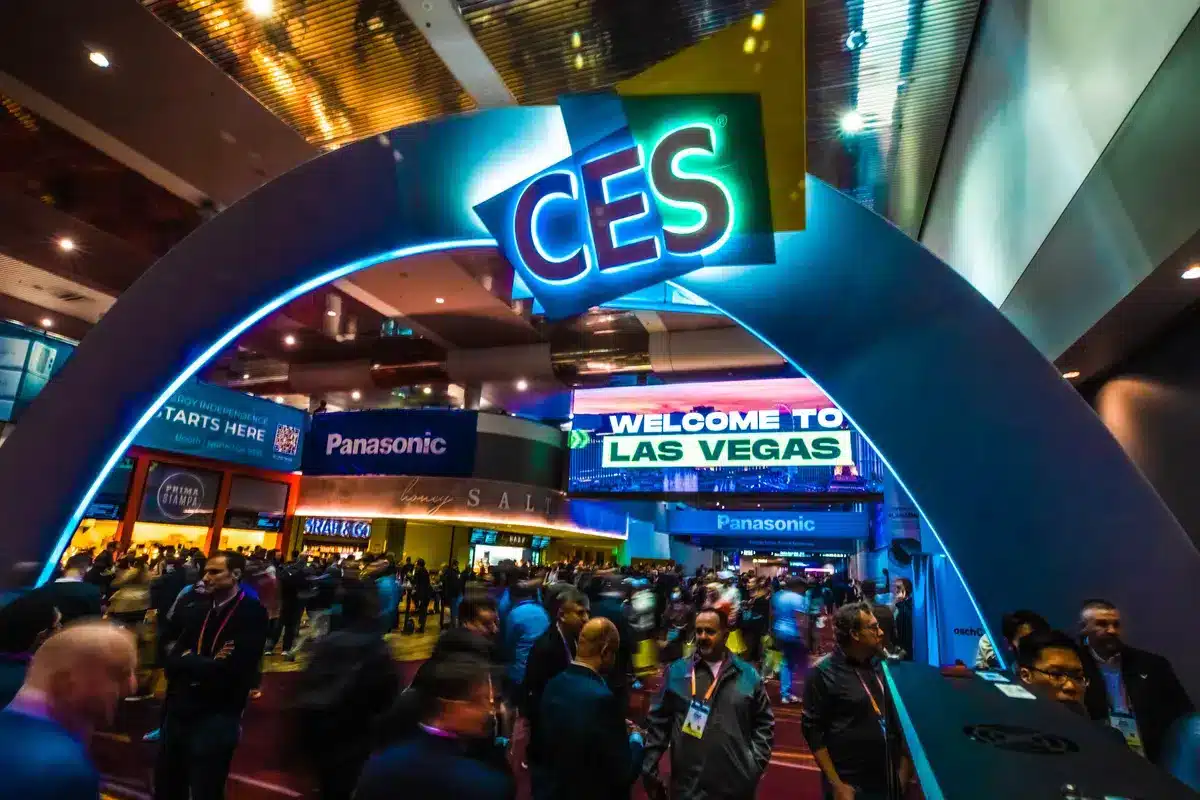
5. **CES 2024 Unveils Vehicles as Advanced Technology Platforms**The 2024 Consumer Electronics Show (CES) served as a powerful showcase for the dramatic evolution of vehicles into highly advanced technology platforms. Automotive giants such as BMW, Mercedes-Benz, and Volkswagen, alongside leading tech and AI firms including Google, Amazon, OpenAI, and Kodiak Robotics, are at the forefront of integrating cutting-edge technology into consumer vehicles. This integration encompasses a wide array of features, from gaming and streaming to augmented reality (AR), artificial intelligence (AI), and sophisticated voice assistants, all making prominent appearances.
BMW’s iDrive 9 system, for instance, introduced significant advancements with its incorporation of AR and AI, creating interactive in-car experiences. This development is a clear reflection of a broader industry shift towards more intuitive and user-centric interfaces, aiming to make the driving experience not just functional, but also highly engaging and personalized. The focus is on seamless interaction and enhanced comfort through technological integration.
Beyond mere passenger comfort and convenience, AI advancements are also extending into the core operational aspects of vehicles. Intel, for example, is introducing new AI-powered chips specifically designed for cars. These innovations point towards a future where vehicles are not merely modes of transport but sophisticated, connected, and intelligent ecosystems capable of dynamic interaction and advanced decision-making.
The clear takeaway from CES 2024 for automakers and marketers alike is the strong emphasis on AI, chatbots, and immersive technology in vehicle development. This firmly indicates the industry’s strategic direction: to create more connected, intelligent, and ultimately, more user-centric driving experiences. This convergence of automotive and technology underscores the importance of showcasing these advanced capabilities in marketing efforts to appeal to tech-savvy consumers.
Read more about: Unveiling Kim Kardashian’s Epic Custom Car Collection: Her Jaw-Dropping Fleet Designed to Match Her Signature Style

6. **Integrating AI into Automotive Marketing Efforts**Artificial intelligence is rapidly moving from an experimental concept to an increasingly indispensable tool within automotive marketing, particularly for optimizing programmatic advertising performance. AI’s capabilities are being leveraged to drive more efficient and effective ad campaigns, marking a significant evolution in how brands connect with potential buyers and manage their advertising spend in a competitive digital landscape.
One of the most powerful applications of AI in this context is predictive analytics. This technology can accurately anticipate online shoppers’ buying intentions, allowing marketers to target consumers who are most likely to convert. Furthermore, AI can predict demand for specific car models and features, enabling brands to proactively tailor their inventory and marketing messages. Tools like Power BI are specifically adept at performing these complex analyses, providing crucial insights.
AI tools also play a vital role in optimizing ad placements and improving overall campaign outcomes by predicting click-through rates (CTR) and adjusting ad ranks. Platforms such as Microsoft’s Xandr utilize AI to identify winning bids and strategically place ads in the most cost-effective manner, ensuring maximum visibility for the advertising budget. This intelligent bid management significantly enhances the efficiency of programmatic campaigns.
For instance, KORTX’s Split Assist™ employs machine learning to precisely adjust how automotive ads perform, determining where and how they are most effectively shown. This capability is especially critical in the automotive industry, where capturing a potential buyer’s interest at the exact right moment can profoundly influence their decision-making process. The ability to fine-tune ad delivery based on real-time performance is a game-changer for marketers.
The overarching takeaway is that AI tools, with their remarkable ability to predict online shopping behaviors and optimize ad performance, are becoming essential for enhancing automotive marketing strategies. They ensure more cost-effective ad placements and more targeted outreach, making every marketing dollar work harder. Embracing AI is no longer optional but a strategic imperative for competitive advantage.
Read more about: Review: The New iPhone Feature That Could Replace Your Wallet – iOS 26’s Wallet Overhaul Examined

7. **Omnichannel Marketing for a Unified Customer Journey**In today’s complex buyer journey, consumers are no longer relying on a single touchpoint but rather navigating a multitude of channels before making a purchase. Studies indicate that buyers frequently visit third-party sites (79%), followed by dealerships (59%), used vehicle retailers (34%), and automaker websites (33%) as they research their next vehicle. This intricate path necessitates a marketing approach that ensures consistency and engagement across every interaction, bridging the gap between digital and physical experiences.
Omnichannel marketing is the strategic response to this evolving consumer behavior, meticulously designed to create a cohesive car shopping experience that seamlessly connects various digital platforms with traditional physical dealerships. The core objective is to ensure that consumers receive consistent support, accurate information, and a uniform brand interaction throughout their entire purchasing journey. This integrated approach not only streamlines the customer experience but also enhances brand perception and trust, as buyers encounter a unified message regardless of the channel they choose.
Consider Ford’s comprehensive website as a prime example of effective omnichannel execution. It offers multiple intuitive pathways for customers to engage with the brand, whether they are conducting online car searches, interacting with chatbots for quick queries, locating a nearby dealership, or meticulously building and customizing their desired vehicle. This thoughtful integration allows customers to transition effortlessly between online and offline touchpoints, maintaining a continuous and personalized experience.
A significant benefit of this unified strategy, as highlighted by Mark Peak, Managing Director at KORTX, is its ability to gather and leverage comprehensive data from these diverse interactions. This wealth of information is invaluable for better decision-making and for crafting highly personalized marketing campaigns that resonate deeply with individual customer needs and shopping habits. Therefore, automotive marketers must wholeheartedly embrace omnichannel marketing to ensure a consistent, engaging, and data-driven brand experience across all customer touchpoints, including video, social media, and more, ultimately leading to higher engagement and sales.
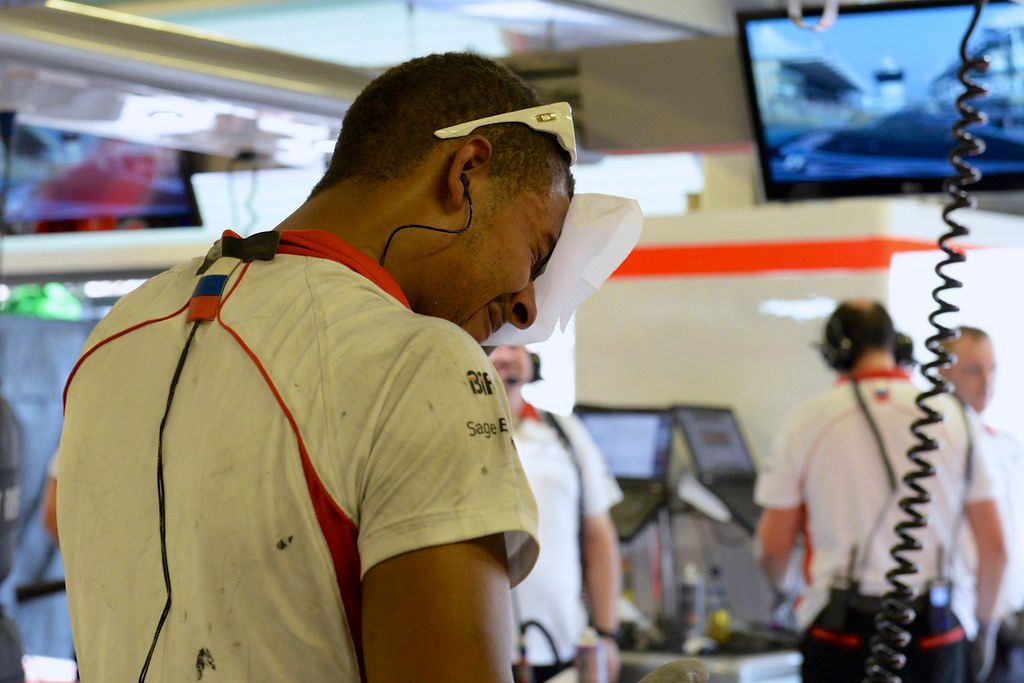
8. **Embracing Sustainability in Automotive Marketing**The global conversation around climate change and environmental responsibility has profoundly influenced consumer preferences, with a noticeable shift towards eco-friendly options. Current trends show that one-third of consumers now actively prefer sustainable choices, making it essential for automotive brands to align their messaging with these evolving values. This isn’t just a fleeting trend; it’s a fundamental change in what consumers expect from the brands they choose to support.
In response, forward-thinking automotive brands are strategically incorporating their sustainability journeys into their brand narratives. They are transparently highlighting milestones achieved, ongoing initiatives, and even the challenges faced in their quest for greater environmental responsibility. This approach serves to enhance brand identity and build a stronger, more authentic connection with the growing segment of eco-conscious consumers who value genuine commitment to sustainability.
General Motors (GM), for instance, has successfully showcased its adoption and promotion of sustainable practices through its communications. By sharing its efforts in areas like electric vehicle production, renewable energy use, and responsible manufacturing, GM demonstrates a tangible commitment that resonates with consumers looking for brands that walk the talk. Such transparency helps to build trust and reinforces the brand’s positioning as a responsible corporate citizen.
However, it is crucial for automotive marketers to understand that authenticity is paramount in sustainability efforts. Superficial claims or vague promises without substantive action, often termed ‘greenwashing,’ can severely damage a brand’s reputation and erode consumer trust. Therefore, the clear takeaway for marketers is that while integrating sustainability into marketing is vital given increasing CO2 emissions concerns and consumer preferences for eco-friendly options, this must be backed by genuine, verifiable actions to maintain credibility and foster long-term loyalty.
Read more about: Beyond Limits: The Human Art of Drifting and the Autonomous Tech Redefining Sideways Driving
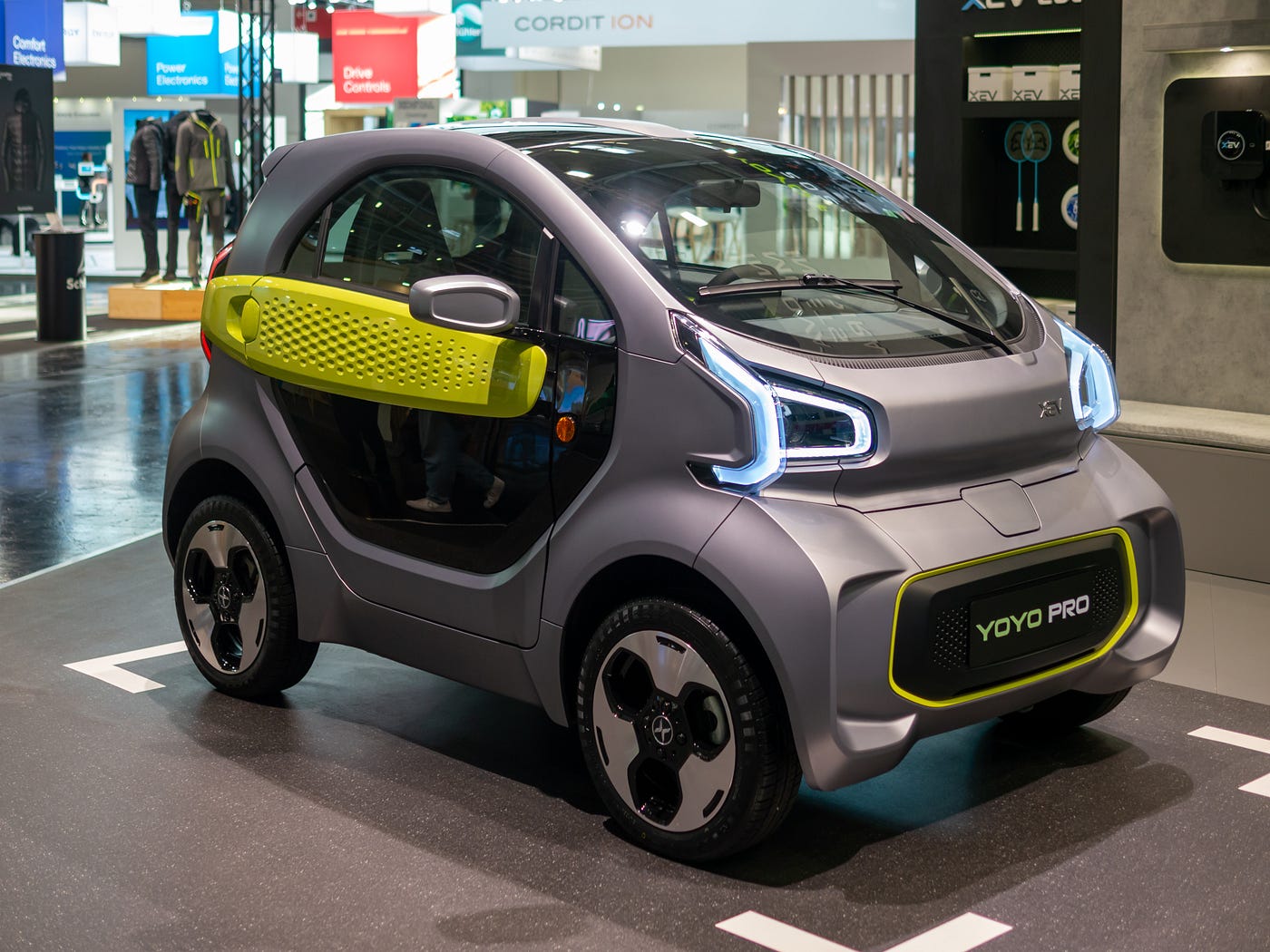
9. **The Rise of Cross-Device Targeting & Mobile Research**The automotive purchasing journey has become increasingly mobile-centric, with a significant 65% of visits to automotive e-commerce sites in 2022 originating from mobile devices. This statistic powerfully illustrates how consumers are now predominantly relying on their smartphones and tablets to compare prices, sift through countless reviews, and access comprehensive vehicle information anytime, anywhere. This shift demands that automotive brands prioritize mobile optimization as a foundational element of their digital strategy.
In an era where the average US household juggles approximately 10 internet-connected devices, the challenge for marketers is to maintain a consistent and continuous brand presence across this diverse ecosystem. This is where cross-device targeting becomes an indispensable strategy. By understanding and tracking user behavior across various devices—from mobile phones and tablets to laptops and connected TVs (CTVs)—marketers can broaden their reach significantly and guarantee seamless brand interaction, ensuring that their message is delivered consistently, regardless of the device in use.
This sophisticated targeting capability allows for a more unified and coherent customer experience. For example, a consumer who begins researching car models on their smartphone during a commute can seamlessly pick up where they left off on their home computer, or even see relevant ads pop up on their smart TV later that evening. This continuous engagement helps to reinforce brand messaging and guides the consumer more smoothly through their decision-making process, eliminating fractured experiences.
Therefore, the imperative for automotive brands is clear: in a landscape defined by multiple devices, cross-device targeting and mobile optimization are not merely advantageous but absolutely essential. These strategies are key to maintaining consistent engagement, optimizing their online presence for maximum visibility, and ensuring that every customer touchpoint, regardless of the device, contributes to a cohesive and effective brand experience. Neglecting this multi-device reality means missing out on crucial opportunities to connect with modern car shoppers.
Read more about: A Comprehensive Review of Facebook: Tracing Its Evolution, Features, Controversies, and Enduring Global Impact

10. **Driving Engagement Through Online Video Marketing in Automotive**Online video (OLV) has firmly cemented its position as a dominant force in influencing automotive shopping habits and purchasing decisions. Over 75% of auto shoppers report that online video significantly influenced their shopping habits or purchases, underscoring its pivotal role in the buyer’s journey. What’s more, a remarkable 64% of shoppers who engage with OLV state that immersive formats, such as 360° videos, would even convince them to buy a car without the traditional necessity of a physical test drive at a dealership. This highlights the profound power of visual storytelling in converting intent into action.
For automotive marketers, the challenge and opportunity lie in crafting engaging narratives that transcend a simple vehicle showcase, transforming it into a compelling story that connects emotionally with potential buyers. These narratives can effectively communicate not just features, but the lifestyle and experiences that a vehicle enables. Buick’s “Imagine That” commercial, for instance, masterfully introduces viewers to the new 2024 Buick Encore GX. The commercial ingeniously envisions viewers loading a birthday cake into the car, seamlessly integrating video and mobile device connectivity, and embarking on a memorable road trip with friends. This approach effectively demonstrates the car’s capabilities while also illustrating how it contributes to a safer, more enjoyable driving experience.
The effectiveness of online video marketing is undeniable; it significantly influences auto shoppers, with immersive formats like 360° videos boosting confidence in purchasing decisions even without a physical test drive. As we’ve seen, strategic use of video can lead to remarkable results. Renault Australia, for example, achieved a 51% reduction in cost per acquisition by leveraging motion ads and targeted retargeting strategies, effectively driving traffic to critical dealer actions like brochure downloads, test drives, and online configurations. Similarly, Hyundai’s IONIQ 5 campaign successfully repurposed TV ads for TikTok, collaborating with creators like @angryreactions to produce engaging “Duet” videos, blending polished content with authentic voices and pushing viewers towards deeper engagement.
To truly capitalize on this trend, marketers must connect these various video formats across different channels throughout the sales funnel. Utilizing platforms like TikTok for broad awareness, leveraging YouTube influencer marketing for credible reviews and comparisons, and integrating tools such as virtual car configurators can effectively support decision-making at later stages. This holistic approach ensures that video content guides buyers seamlessly from their very first impression all the way through to the final purchase, providing a rich, immersive, and informative journey.
Read more about: Unveiling the Unseen: Masterful Hidden Messages and Ingenious Features, From Automotive Marvels to Clever Campaigns

11. **The Rise of Conversion APIs & First-Party Data Amidst Cookie Decline**The digital advertising landscape is undergoing a monumental shift with the ongoing deprecation of third-party cookies, an irreversible trend that will continue through 2024. This change necessitates that automotive marketers proactively seek out robust and privacy-compliant alternatives for data collection and audience targeting. Enter Conversion APIs and other first-party data solutions, which offer powerful new pathways by leveraging data collected directly from servers rather than relying on increasingly obsolete user browser cookies.
Conversion APIs facilitate a direct, server-to-server connection that allows businesses to send data from their website or app directly to advertising platforms, circumventing the limitations of browser-based tracking. This method not only enhances data accuracy and reliability but also bolsters user privacy, aligning with evolving regulations. The shift towards first-party data, which is data collected directly from a brand’s own interactions with customers, provides marketers with invaluable insights into their audience’s behaviors and preferences, all within a controlled and consented environment.
Specialized firms like KORTX are at the forefront of this transition, offering advanced data management and audience intelligence technology designed for a cookieless future. Their Axon Audience Manager, for example, is specifically engineered to capture and meticulously organize first-party data gleaned from site interactions. This structured data can then be seamlessly used for highly targeted campaign activations, ensuring that marketing efforts are both precise and effective. Furthermore, KORTX Intelligence takes this a step further by gathering comprehensive information to create detailed audience profiles, all while rigorously adhering to crucial privacy regulations, such as those mandated by the California Air Resources Board (CARB).
Therefore, the clear takeaway for automotive marketers is that as third-party cookies continue their decline, embracing Conversion APIs and sophisticated first-party data solutions like KORTX’s Axon Audience Manager is not just an option, but a strategic imperative. These robust alternatives are essential for gathering critical insights, optimizing campaign targeting, and ultimately thriving in a future digital ecosystem that prioritizes privacy and direct consumer relationships. Adapting now will ensure sustained marketing effectiveness and competitive advantage.

12. **Social Media for Automotive Lead Generation**Social media has evolved into an indispensable tool within the automotive purchase journey, playing a significant role in both research and decision-making. Data reveals that a notable 21% of car buyers explicitly state that social media directly influenced their purchase decisions, while an even larger 71% utilized these platforms for initial research. This highlights the profound impact of social channels beyond mere brand awareness, positioning them as critical drivers for lead generation and conversion in the automotive sector.
Platform popularity varies, but several giants dominate the automotive research landscape. YouTube leads as the most popular platform among potential buyers, with 41% using it for vehicle-related content. Facebook follows closely at 37%, while Instagram captures 21% of this audience. Emerging platforms like TikTok are also significant players, with a vast majority of its younger user base leveraging the platform for automotive research and the discovery of new brands and products, showcasing its growing influence in this space.
Beyond the pre-purchase phase, social media continues to serve as a vital communication channel, particularly among millennials and Gen Z consumers. These younger demographics frequently engage with brands on social platforms for post-purchase inquiries, customer service, and feedback, transforming it into a holistic touchpoint throughout the entire customer lifecycle. This continued engagement underscores the need for brands to maintain an active and responsive presence on these channels.
When using social media for advertising, automotive marketers must critically consider where their target audience spends the most time. As Josh Pheneger, Account Strategist at KORTX, advises, “If you’re marketing a car to a younger demographic, platforms like TikTok are invaluable due to their massive young user base. The key is to match your campaign’s platform with your audience’s preferences, crafting content that resonates with them.” A prime example of this is Mohawk Chevrolet in New York, which transformed its TikTok presence into a mockumentary series reminiscent of *The Office*. One episode garnered millions of views within days, significantly increasing dealership traffic and even featuring GM executives. This demonstrates how authentic, lightly scripted content can drive real-world results and generate substantial leads. Ultimately, social media influences both research and purchasing decisions across diverse platforms like YouTube, Facebook, Instagram, and TikTok, and serves as a critical post-purchase communication channel for younger consumers, making strategic platform choice and authentic content absolutely essential.
**Automotive Marketing Trends in 2025 & Beyond**
Staying ahead in the rapidly evolving automotive marketing landscape means constant adaptation to the shifting preferences and heightened expectations of today’s well-informed consumers. The insights from these twelve trends underscore a critical truth: success hinges on embracing digital innovation, understanding data, and communicating with authenticity.
Leveraging powerful strategies such as engaging video content, targeted social media advertising, sophisticated cross-device targeting, and the integration of AI-powered analytics are no longer optional—they are imperative for showcasing the advanced features of modern vehicles and connecting with buyers on their terms. However, while choosing the right marketing strategies is undeniably key, maintaining authenticity, ensuring transparency in messaging, and delivering genuine relevance in every interaction are vital for building enduring trust and fostering deep loyalty among modern consumers.
Read more about: The Multifaceted Career of Jim Carrey: Exploring His Journey from Comedy Dynamo to Acclaimed Dramatic Actor
The automotive industry is dynamic, challenging, and filled with immense potential. By actively embracing these transformative trends, marketers can not only navigate the complexities of 2025 but also lay a robust foundation for future growth and unprecedented success. So, what are you waiting for? Rev up your automotive marketing strategy today! Partnering with experts like KORTX can transform your approach with tailored solutions designed to truly engage and convert today’s discerning consumers. The future of automotive marketing is here, and it’s digital, intelligent, and deeply personal.” , “_words_section2”: “2000

